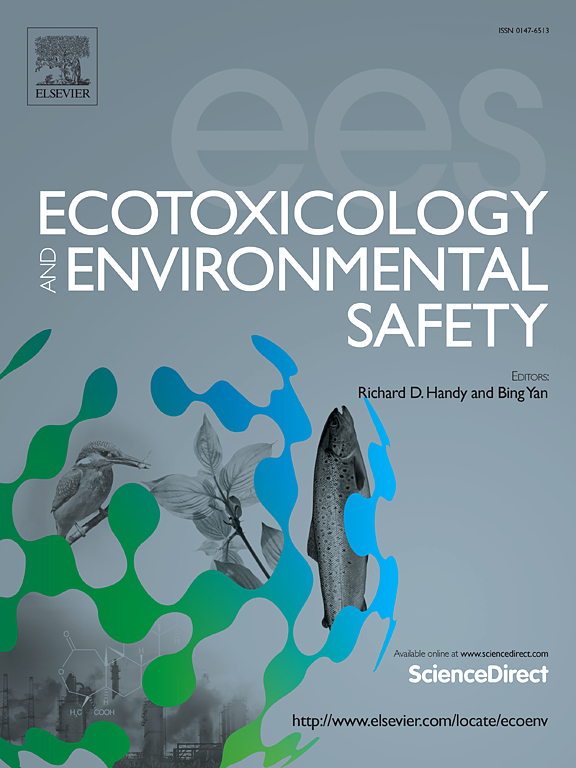The environmental occurrence, human exposure, and toxicity of novel bisphenol S derivatives: A review
IF 6.2
2区 环境科学与生态学
Q1 ENVIRONMENTAL SCIENCES
引用次数: 0
Abstract
Novel bisphenol S (BPS) derivatives are being increasingly utilized as substitutes to bisphenol A (BPA) and BPS in thermal receipts and other industrial or commercial products. In recent years, the environmental occurrence, human exposure, and toxicity of non-chlorinated and chlorinated BPS derivatives have been investigated in numerous studies. This review summarizes the state-of-art and new knowledge on these aspects and provides recommendations for future research directions. The environmental analysis showed that BPS derivatives have been widely detected in paper products, water, indoor dust, sediment, and municipal sewage sludge. Recent studies have also reported the presence of non-chlorinated BPS derivatives, such as benzenesulfonylbenzene (DDS) and 4-(4-propan-2-yloxyphenyl)sulfonylphenol (BPSIP), in human breast milk, urine, and the maternal−fetal−placental unit. Toxicological studies suggest that BPS derivatives may cause a series of toxic effects, including endocrine-disrupting effects, cytotoxicity, hepatotoxicity, developmental toxicity, and neurotoxicity, some of which have been shown to exhibit adverse effects similar to or even greater than those of BPS. Future studies should focus on elucidating environmental occurrences, half-lives, sources for human exposure, and potential transformation pathways of BPS derivatives, as well as their toxic effects and underlying mechanisms.
新型双酚S衍生物的环境发生、人体暴露和毒性研究综述
新型双酚S (BPS)衍生物作为双酚A (BPA)和BPS的替代品越来越多地应用于热收据和其他工业或商业产品中。近年来,人们对非氯化和氯化BPS衍生物的环境发生、人体暴露和毒性进行了大量研究。本文对这些方面的研究现状和新知识进行了总结,并对今后的研究方向提出了建议。环境分析表明,BPS衍生物在纸制品、水、室内灰尘、沉积物和城市污水污泥中被广泛检测到。最近的研究也报道了非氯化BPS衍生物的存在,如苯磺酰苯(DDS)和4-(4-丙烷-2-基氧苯基)磺基苯酚(BPSIP),存在于人类母乳、尿液和母体-胎儿-胎盘单元中。毒理学研究表明,BPS衍生物可能引起一系列毒性作用,包括内分泌干扰作用、细胞毒性、肝毒性、发育毒性和神经毒性,其中一些已被证明表现出与BPS相似甚至更大的副作用。未来的研究应集中在阐明BPS衍生物的环境发生、半衰期、人类暴露源、潜在转化途径以及其毒性作用和潜在机制。
本文章由计算机程序翻译,如有差异,请以英文原文为准。
求助全文
约1分钟内获得全文
求助全文
来源期刊
CiteScore
12.10
自引率
5.90%
发文量
1234
审稿时长
88 days
期刊介绍:
Ecotoxicology and Environmental Safety is a multi-disciplinary journal that focuses on understanding the exposure and effects of environmental contamination on organisms including human health. The scope of the journal covers three main themes. The topics within these themes, indicated below, include (but are not limited to) the following: Ecotoxicology、Environmental Chemistry、Environmental Safety etc.

 求助内容:
求助内容: 应助结果提醒方式:
应助结果提醒方式:


